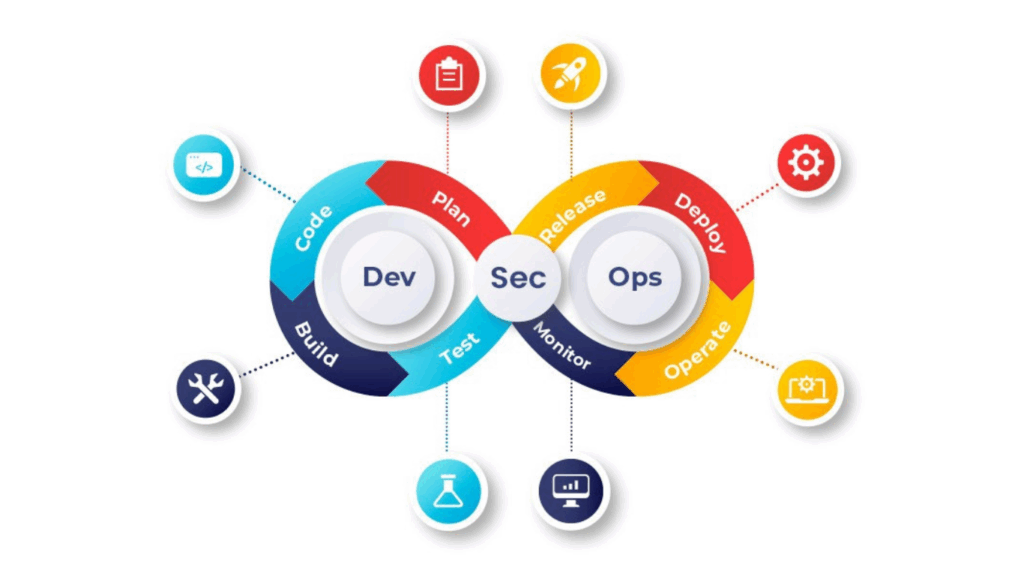Business Analysis: The role of a business analyst (BA) is crucial in the ever-changing business environment, as it serves as a vital bridge between strategic objectives and technology advancements. In today’s landscape, where organizations must adapt quickly to market demands and technological innovations, BAs play an essential role in ensuring that business strategies are effectively translated into actionable plans and implemented solutions.
The application of ITIL (Information Technology Infrastructure Library) concepts has become a major influence in this field, reshaping how business analysts navigate and optimize business processes. ITIL provides a structured framework that emphasizes best practices in IT service management, enabling BAs to align IT services with business needs. By leveraging ITIL principles, business analysts can identify areas for improvement, streamline workflows, and enhance service delivery.
This alignment not only helps organizations achieve their strategic goals but also fosters a culture of continuous improvement and operational excellence. Moreover, by utilizing ITIL’s service value system, BAs can ensure that technology investments deliver maximum value, contributing to overall business success.
As organizations continue to embrace digital transformation, the integration of ITIL concepts will remain a key factor in empowering business analysts to effectively manage change, optimize performance, and drive innovation within their organizations.To learn more about ITIL Business Analysis, check out our Online classes for business analyst.
Understanding ITIL
Fundamentally, ITIL is a thorough framework that encompasses a collection of recommended practices for IT service management. Over time, ITIL has developed into a widely accepted framework that provides direction on how to match IT services with business objectives. It is made up of a number of specific procedures that prioritise customer-centricity, continuous improvement, and service lifecycle management.
The practice of ITIL 4 Business Analysis assists organisations in recognizing and expressing their needs and requirements in order to facilitate efficient decision-making and value delivery. It entails comprehending the goals, procedures, and strategy of the company and converting them into precise, doable needs for IT solutions.
What Is ITIL Business Analysis?
For business analysts and those involved in analyzing, establishing, and managing business requirements within the framework of IT service management, ITIL 4’s Business Analysis practice offers comprehensive guidelines and best practices. This framework is designed to streamline the processes associated with identifying and addressing the needs of the business, ensuring that IT services are not only aligned with organizational goals but also deliver tangible value.
ITIL 4 emphasizes the critical importance of collaboration and effective communication among business analysts, stakeholders, and IT teams. By fostering an environment where open dialogue is encouraged, the practice helps to bridge gaps between technical capabilities and business needs. This collaborative approach is essential for accurately capturing requirements and ensuring that all parties have a shared understanding of project objectives.
Moreover, ITIL 4’s Business Analysis practice advocates for continuous improvement and adaptability. It encourages business analysts to remain responsive to changing business environments and emerging technologies, allowing organizations to pivot as necessary. This agility enhances the organization’s ability to deliver successful IT solutions that not only meet current demands but also anticipate future needs.
Ultimately, by integrating these best practices, business analysts can drive more effective IT service management, leading to improved efficiency, reduced costs, and greater customer satisfaction. The following are some salient features of the ITIL 4 Business Analysis practice:
Purpose
Identifying, analyzing, and articulating the needs, requirements, and priorities of the business is the core purpose of business analysis. This discipline serves as a vital process that helps organizations understand their operational challenges and opportunities. By engaging with stakeholders across various levels, business analysts gather valuable insights that inform decision making and guide project direction.
The ultimate goal of business analysis is to ensure that IT services and solutions are in alignment with the business’s strategic goals. This alignment is crucial, as it facilitates the development of solutions that not only meet immediate needs but also support long term growth and success.
Moreover, effective business analysis fosters collaboration between technical teams and business leaders, creating a shared understanding of objectives and expectations. By establishing clear communication channels and utilizing structured methodologies, business analysts can bridge the gap between technology and business strategy.
This ensures that solutions are not only technically feasible but also provide real value to the organization, enhancing overall performance and competitiveness in the marketplace. Ultimately, business analysis plays a crucial role in driving successful outcomes, enabling organizations to adapt and thrive in an ever-changing environment.
Scope
Business analysis encompasses all phases of the service value chain, from strategy and demand to design, transition, and operation. It entails tasks including determining needs, evaluating viability, defining commercial prospects, and validating solutions.
Key Activities
Business requirements are gathered and documented, feasibility studies are carried out, current processes are examined, opportunities for improvement are found, workshops and meetings are facilitated, and suggestions for IT solution design and implementation are all part of the practice of business analysis.
Techniques and Tools
Business analysts employ many methodologies and instruments to efficiently accomplish their responsibilities. These could include use case creation, stakeholder analysis, data analysis, business process modelling, interviews, surveys, workshops, and prototyping as methods for eliciting needs.
Collaboration and Communication
Strong teamwork and communication abilities are essential for successful business analysis. It is imperative for business analysts to interact with stakeholders in both the IT and business domains to manage expectations, ensure a clear grasp of needs, and support efficient decision-making.
Relationship with Other Practices
There are strong connections between business analysis and other ITIL 4 practices. For instance, it collaborates with Service Design to specify specifications for new services, Service Transition to guarantee seamless change implementation and transition, and Service Strategy to match IT solutions with business goals.
Outputs and Deliverables
Business cases, requirement specifications, process models, use cases, user stories, impact assessments, and feasibility reports are just a few of the deliverables that come from business analysis. The basis for deliberating wisely regarding IT services and solutions is provided by these artefacts.
Organisations can improve their capacity to comprehend business requirements, prioritise expenditures, and supply IT solutions that produce value and support the accomplishment of strategic goals by utilising the ITIL 4 Business Analysis methodology. It encourages cooperation and alignment between business and IT stakeholders by promoting an all-encompassing and business-focused approach to IT service management.
Enhancing Business Analysis with ITIL
The adoption of ITIL principles by Business Analysts promotes a more strategic and comprehensive approach to their duties, acting as a catalyst for significant change. Let’s see how ITIL enhances a BA’s role:
- Structured process analysis: ITIL offers a systematic framework for process analysis, design, and improvement. This is known as structured process analysis. By using this methodology, business analysts are able to obtain a thorough understanding of IT service life cycles, which facilitates the optimization of operations and increases efficiency.
- Encouraging Effective Communication: ITIL closes the communication gap between IT teams and business stakeholders by standardising terminology and language. ITIL-verse BAs are able to communicate difficult technical ideas in a way that aligns with organisational goals.
- Informed Decision-Making: BAs learn about service strategy, design, transition, and operation by adopting ITIL processes. Their ability to make well-informed decisions that match IT services with broader business objectives is enhanced by this information.
- Culture of Continuous Improvement: ITIL’s fundamental tenet of continuous service improvement and the business analyst’s goal of streamlining business processes go hand in hand. By fostering a culture of continuous improvement and adaptability, BAs make sure that IT services change to meet the demands of the organisation.
- Adaptability and Risk mitigation: ITIL gives BAs the resources they need to successfully predict and manage risks. By being proactive, this strategy reduces interruptions and guarantees company continuity even in the face of operational or technological difficulties.
Real-world Impact and Success Stories
Several success stories confirm how incorporating ITIL into the purview of Business Analysis can have a revolutionary effect. Better service delivery, more operational efficiency, and a more strategic alignment of IT activities with business goals have all been observed by organisations. ITIL framework-savvy BAs have been essential in coordinating these achievements, stimulating creativity, and creating a cooperative atmosphere that welcomes change.
Challenges and Adoption
Although there are many advantages to ITIL integration, there are still implementation issues. Obstacles frequently include corporate inertia, resistance to change, and the difficulty of integrating ITIL approaches with current procedures. To enable successful integration, BAs operating in this environment need to exhibit strong leadership qualities, effective communication abilities, and a thorough comprehension of organisational dynamics.
Continuous Learning and Evolution
In the dynamic world of business and technology, a BA’s integration of ITIL principles is a continuous process. Sustaining success requires ongoing learning, keeping up with new ITIL practices, and adjusting to shifting corporate environments.
Conclusion
ITIL is a strategic facilitator for business analysts, not just a set of rules for IT administration. By enabling a culture of continuous improvement, supporting innovation, and coordinating IT projects with business objectives, its integration gives business analysts the ability to act as strategic partners and propels organisational success. Business analysis becomes a proactive, value-driven role that is essential for the modern organisation when it adopts ITIL principles.The alignment of ITIL with business analysis is not merely a fad; rather, it is a strategic necessity for enterprises hoping to prosper in a more digital and competitive landscape. Check out the Business analyst course online to learn more.
Call to Action
Unlock the full potential of your business analysis efforts by integrating ITIL practices into your processes. By leveraging ITIL’s structured framework, you can enhance efficiency, improve service delivery, and ensure alignment with organizational goals. Start maximizing your business analysis today explore training programs at H2K Infosys that will equip you with the knowledge to implement ITIL effectively in your organization!





























